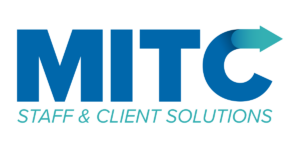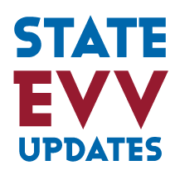Consumer-directed services offer the independence many individuals desire, while ensuring they get the care they need. However, these services fall under the reach of the federal EVV mandate. Because of their unique requirements, providers managing programs for consumer- or family-directed services face real compliance and billing challenges that complicate EVV implementations.
The purpose of CDS programs is to allow individuals to drive their own care. Therefore, an EVV system cannot compromise the consumers’ ability to do so. Two primary challenges that consumers face with EVV systems are ease of use and ability to approve timesheets. These hurdles cannot be overlooked when considering an EVV system.
Challenge #1: Ease of Use
An EVV system’s ease of use is essential in CDS programs because EVV success depends heavily on the client. Applied Self Direction, an arm of the National Resource Center for Participant-Directed Services, notes, “Technology is an essential tool, but people need to know how to use the tool to realize its benefits.” If consumers do not understand the EVV system, they will not enjoy its advantages.
The Consumer Directed Personal Assistance Association of New York State (CDPAANYS) reinforces this view. In its recent report on EVV, the association states the importance of usability for an effective EVV system:
“In the end, an EVV system can only be as effective as your consumers and their PAs willingness, ability, and capacity to utilize it. Therefore, FIs should seek input from established groups of consumers before a system is chosen and implemented. When choosing a system, recognize that accessibility is a critical component, and that consumers and their PAs, like the rest of us, value highly both flexibility and privacy.
“Most importantly, it is important to remember that CDPA is based on the notion that the consumer, not an agency, recruits, hires, trains, supervises (including scheduling), and terminates their own staff. Any EVV solution must provide for a strong role for the consumer and the continued ability to perform these supervisory tasks.
“If this is accomplished, EVV can serve as not only a compliance with Federal mandates, but an effective means to efficiently track time and attendance and submit billing, streamlining operations and increasing responsiveness; a value to all.”
Challenge #2: Client Approval of Timesheets
Another obstacle is ensuring the billing process is prompt and accurate. Unlike traditional HCBS settings, this requires input from the consumer. As the director of his/her own care, the consumer must approve employee time and attendance records before they are converted into billing and payroll records. The problem is that not every EVV system has this capability.
Providers managing CDS programs must consider an EVV system’s capacity for client access before deciding to implement it. “A successful EVV system will provide a variety of accessible means for individuals to approve service hours, using both innovative and standard technologies,” according to Applied Self Direction. Such a system would allow mobile access for clients and/or their guardians to approve timesheets, communicate efficiently with employees, and make corrections when mistakes occur.
Explore Agency Workforce Management for CDS Programs
Fortunately, Agency Workforce Management is designed to support providers managing self-directed programs. Here are some ways our software may help you succeed under an EVV mandate:
- Review real time or after-the-fact multiple attendant attendance records
- Includes Caller-ID, GPS or IP address information
- Approve visits with option to add comment next to any visit
- Automatically remind consumers, guardians or parents and provider if consumer fails to approve attendance in a timely manner
- Reports of approved and unapproved records by consumer
- Review attendant schedules
- Use calendar to check schedules
- Clock in/out using EVV compliant systems (landline or smart phone)
- Enter documentation
- Review attendance, schedules and more
- Receive daily next shift reminders
- Eliminate the costs and risk of paper forms and data entry
- Integrates with payroll
- Streamline billing and improve cash flow
- Integrates with billing


 2018 MITC
2018 MITC 2018 MITC
2018 MITC




 2018 MITC
2018 MITC